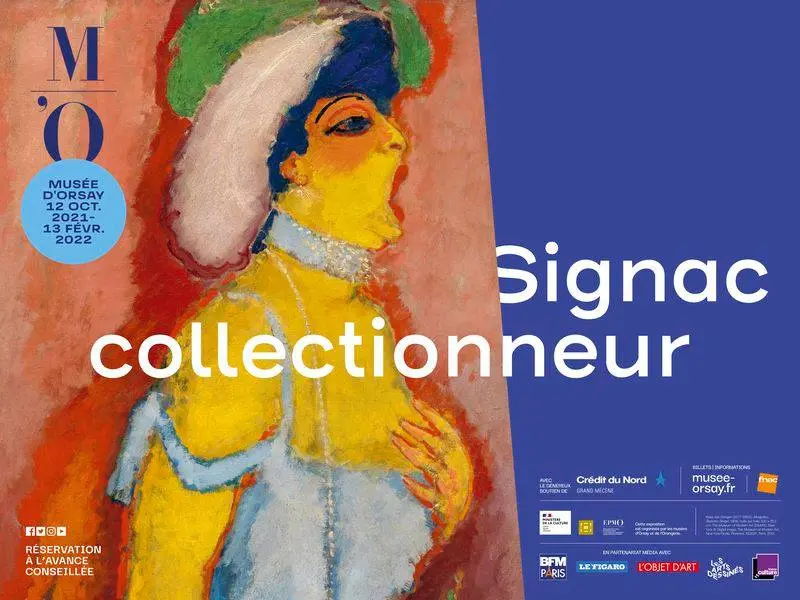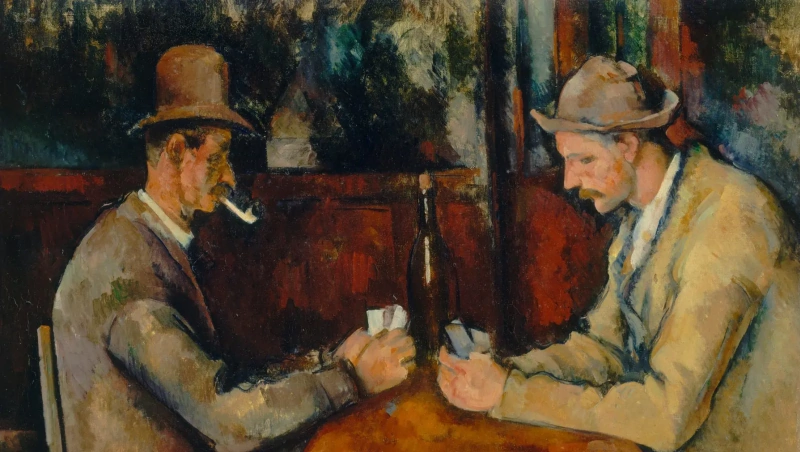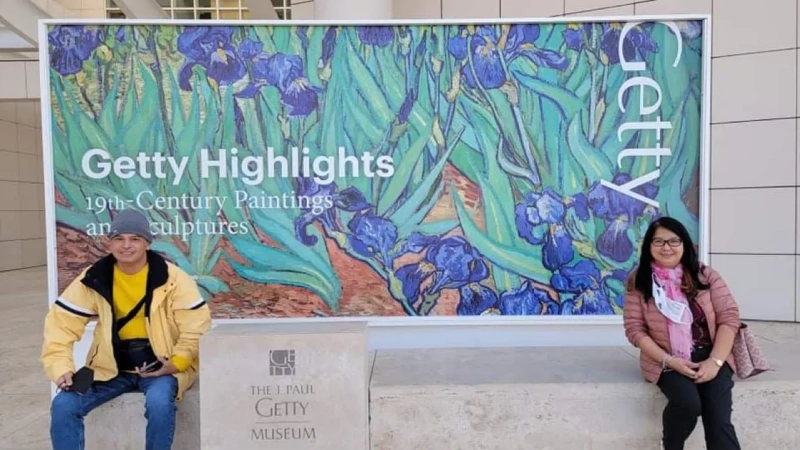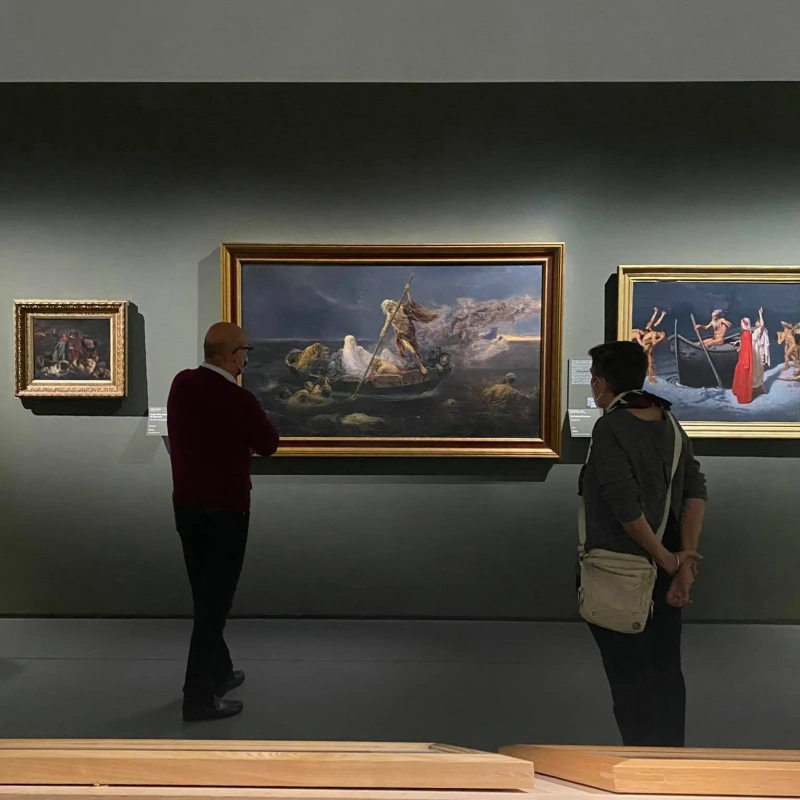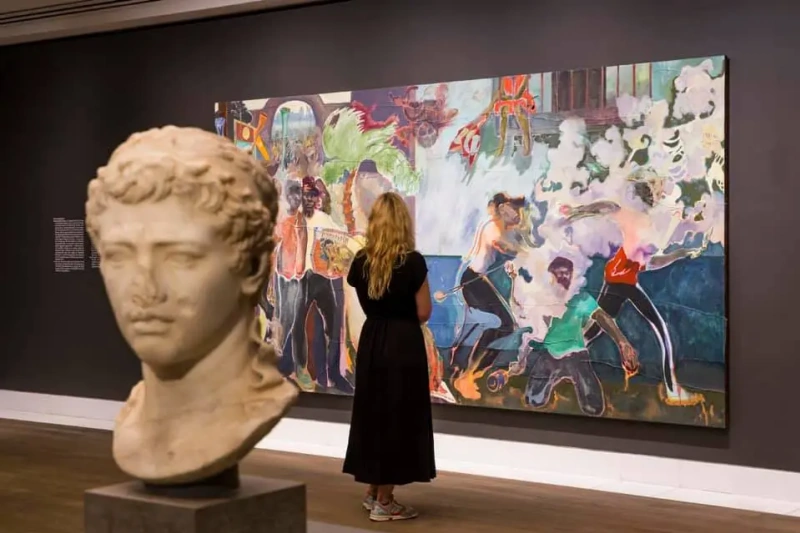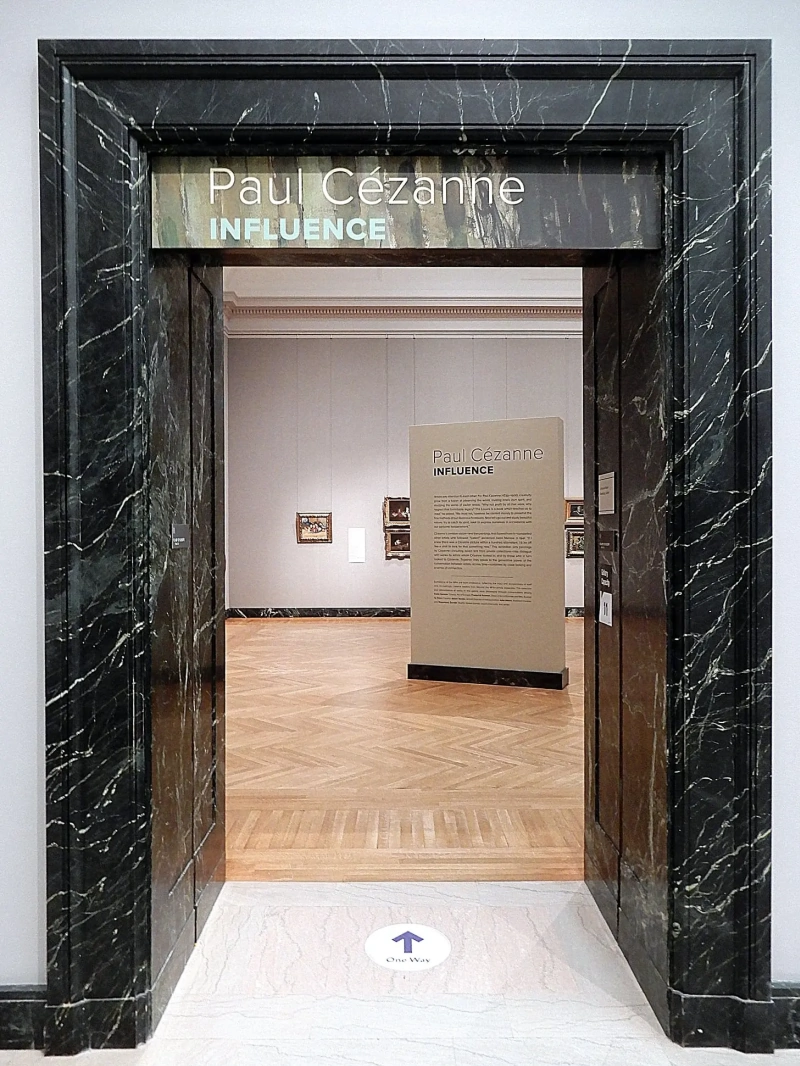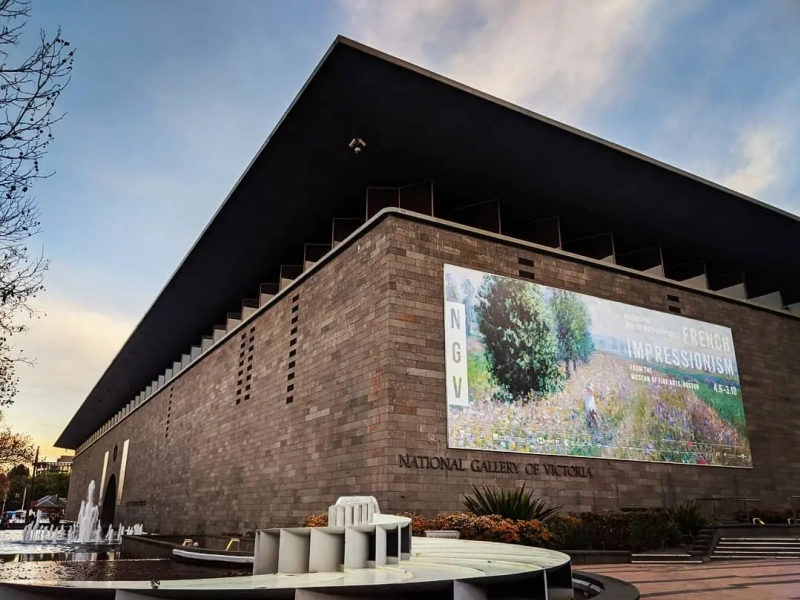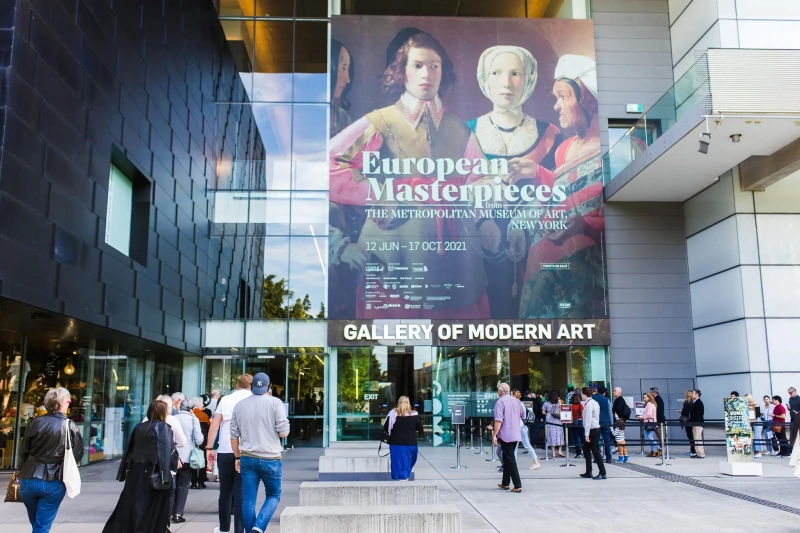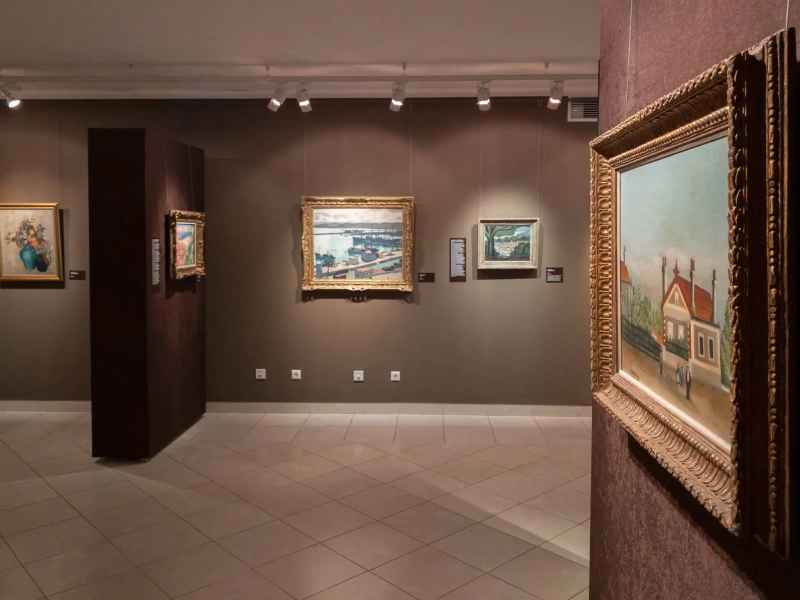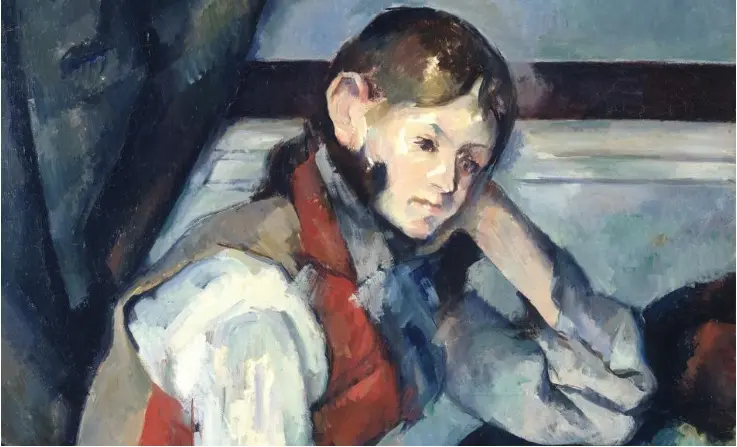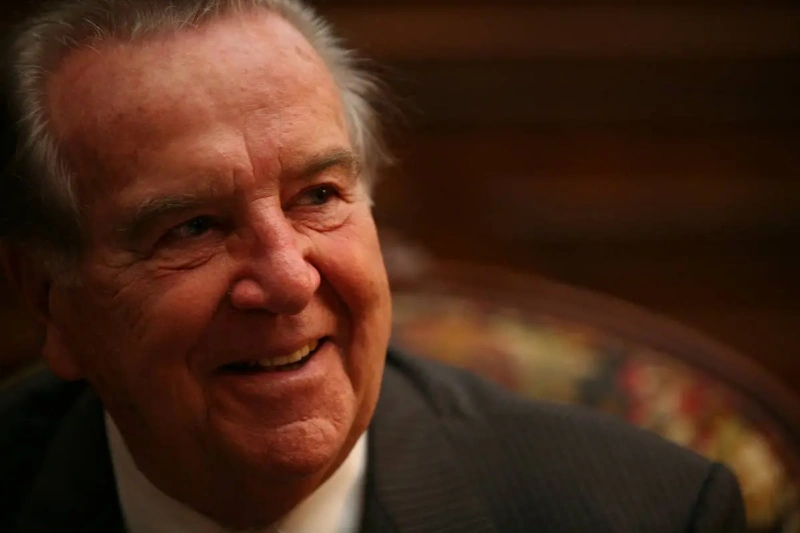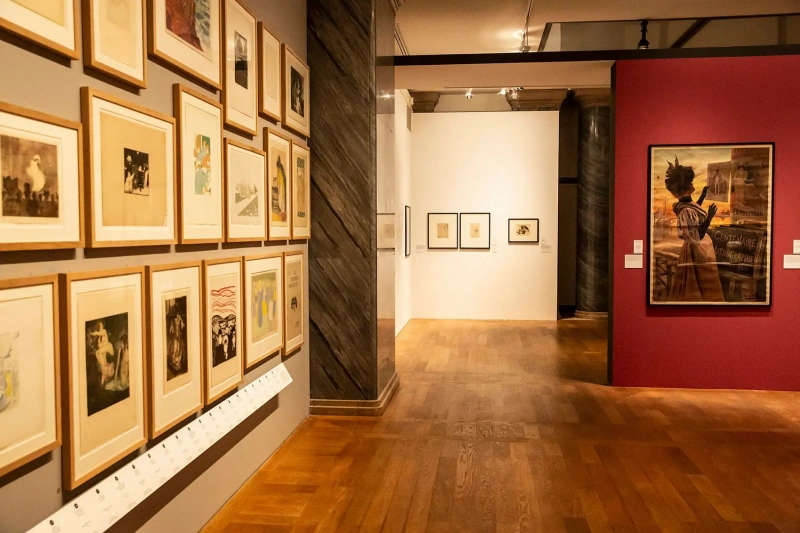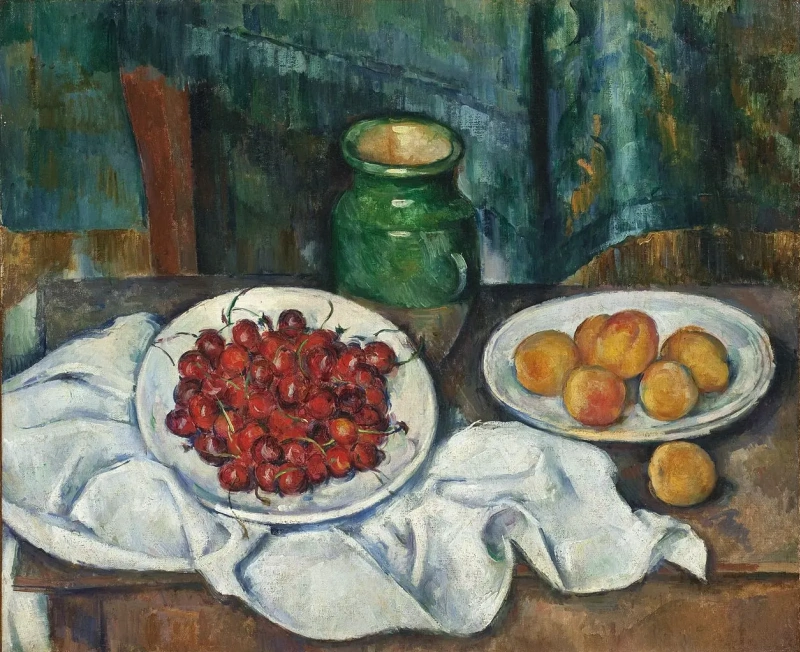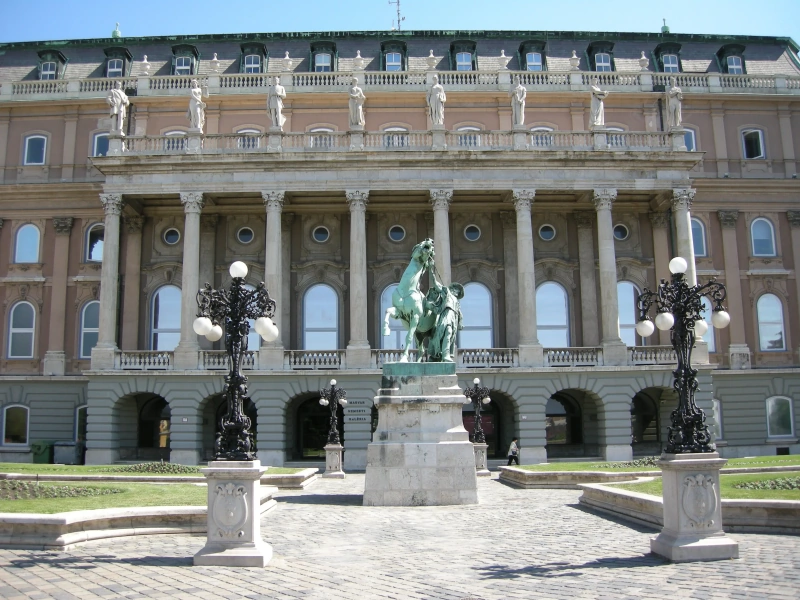log in
Enter site
Login to use Arthive functionality to the maximum
Paul Cezanne (19 January 1839 — 22 October 1906) is the French artist whose art search and findings leave us no single artistic style to assign him to. The artist of post impressionism, who created his oeuvres alongside with impressionists and was only recognized by the end of his days.
Creative features of the artist Paul Cézanne: Cézanne is said to have formed the bridge between late 19th-century impressionist movement and the early 20th century's new line of artistic enquiry, cubism. Like the impressionists, he often worked outdoors directly before his subjects. But unlike the impressionists, Cézanne used colour, not as an end in itself, but rather like line, as a tool with which to construct form and space. Cézanne wanted his models to be as still as apples, and he dreamed to surprise the whole Paris with an apple someday. Cézanne always considered his main task to understand the essence of the object shape – it can be done much more reliably and effectively, when the subject does not distract the painter with its fussiness and pose changes. The subject world is alive in the artist’s art. His apples, peaches, jugs are the things with their souls and inner refulgence. A rich, dark style palette was characteristic for the artist’s early paintings; critics called his artworks peinture au pistolet – spray painting. He often used palette knife at that time, imposing heavy, defiantly thick layers of paint on his works. The palette of Cézanne’s works brightened when he started working next to the impressionist painter Camille Pissarro. In his last years he felt passion for watercolour which made his oil painting translucent. Our understanding of Cézanne's painting is coloured by later cubism and abstraction, focusing attention on the formal aspects of his images.
Famous paintings by Paul Cézanne: The Card Players, The Large Bathers, Mont Sainte-Victoire, Apples and Oranges, Man with a Pipe, Still Life with Plaster Cupid.
There is no chance to make a spectacular costumed biographical movie about Paul Cézanne and his painting. The facts are he never travelled, nor fell in love with malapert beauties, nor drank absinthe in brothels and bars, nor committed outrages. Instead of drinking a fashionable French style bohemian cocktail, the artist stubbornly struggled with himself all the time. He even died of pneumonia, which he got during an open air painting under cold rain. All significant things that happened to Cézanne happened in his head. This internal struggle surely impaired his motivation to behave with decorum and observe social prescriptions. The biographic film about Cézanne would belong to the genre of early arthouse style psychological drama with the colour playing the principal character.
Only two things made his early years bright: friendship and the sunny surroundings almost all year round in his hometown of Aix, the place that attracted him till his death. He would run there from Paris every year and paint it hundreds of times. The Mont Saint-Victoire alone would appear in Cézanne's paintings more than 60 times. At the slightest opportunity, he escaped from home to walk through the woods and valleys accompanied by his best friends Emil Zola and Baptistin Baille, dreamed with them day after day, looking into the hot sky of Provence, dreamed about glory, about great and sublime love, about their mission. These inseparable three were brilliant students, the best in the Bourbon College, they memorized Virgil by heart and read Hugo and de Musset eagerly, competed annually in the number of medals received.
The dream of wealth was just as far away and fantastic as the fantasy of ideal love for the small poor Zola, who rented half-empty rooms with his mother and grandmother. While talks about money turned Paul’s stomach. His father was all busy making money, and had already come up with a reliable life plan for his only son. Cézanne was afraid of his father woundily afraid, and would be afraid all his life. This fear would make him enter the Faculty of Law, and he would even walk tens of kilometers on foot at the age of 40, so as not to miss a family dinner, he would also hide his mistress and son from the old Louis Auguste for 17 years. Only one of his personal decisions was stronger than this little home tyranny – an irresistible desire to paint.
At the meetings of young artists, future impressionists, in the Gerbois café, Paul Cézanne was a strange participant: he broke in disheveled, sniffed, greeted everyone, indulged in rude jokes and sat down silent to listen to the conversations about the new works and the new art. When he did not like something they said, he rose noisily and left. "What are you showing at this year's Salon?" asked the elegant Edouard Manet. "A pot of shit," Cézanne answered.
The Art Salon jury were also squeamishly waiting every time for this mad painter to bring his new masterpieces in a ramshackle painter’s cart or just on his back. They already got used to this trick he repeated for 18 years, until 1882, when his painting was taken once to the Salon. Obstinacy, perhaps, was one of his best virtues. However, neither this year, nor in the next few decades, the public was not ready for such style of art.
P.S. Paul Cézanne always had the phobia of touch. To land a woman he liked he only could shave his beard; he was even married to a model Marie-Hortense Fiquet. Half a lifetime, he hid this relationship from his father, and the second half of his biography he spent hiding from this relationship himself. In the dying delirium Paul called out for two people, the director of the Aix Art Museum and his son. When famous Cézanne, the artist of post impressionism, died of pneumonia, Paul Jr. and Hortense received a letter in Paris stating the date of the funeral, a day earlier. Hortense was not in a great hurry and went to Aix as soon as she finished fitting her dress.
Author: Anna Sidelnikova
Continua a leggere
Creative features of the artist Paul Cézanne: Cézanne is said to have formed the bridge between late 19th-century impressionist movement and the early 20th century's new line of artistic enquiry, cubism. Like the impressionists, he often worked outdoors directly before his subjects. But unlike the impressionists, Cézanne used colour, not as an end in itself, but rather like line, as a tool with which to construct form and space. Cézanne wanted his models to be as still as apples, and he dreamed to surprise the whole Paris with an apple someday. Cézanne always considered his main task to understand the essence of the object shape – it can be done much more reliably and effectively, when the subject does not distract the painter with its fussiness and pose changes. The subject world is alive in the artist’s art. His apples, peaches, jugs are the things with their souls and inner refulgence. A rich, dark style palette was characteristic for the artist’s early paintings; critics called his artworks peinture au pistolet – spray painting. He often used palette knife at that time, imposing heavy, defiantly thick layers of paint on his works. The palette of Cézanne’s works brightened when he started working next to the impressionist painter Camille Pissarro. In his last years he felt passion for watercolour which made his oil painting translucent. Our understanding of Cézanne's painting is coloured by later cubism and abstraction, focusing attention on the formal aspects of his images.
Famous paintings by Paul Cézanne: The Card Players, The Large Bathers, Mont Sainte-Victoire, Apples and Oranges, Man with a Pipe, Still Life with Plaster Cupid.
There is no chance to make a spectacular costumed biographical movie about Paul Cézanne and his painting. The facts are he never travelled, nor fell in love with malapert beauties, nor drank absinthe in brothels and bars, nor committed outrages. Instead of drinking a fashionable French style bohemian cocktail, the artist stubbornly struggled with himself all the time. He even died of pneumonia, which he got during an open air painting under cold rain. All significant things that happened to Cézanne happened in his head. This internal struggle surely impaired his motivation to behave with decorum and observe social prescriptions. The biographic film about Cézanne would belong to the genre of early arthouse style psychological drama with the colour playing the principal character.
Old used paints
The first watercolours, which early fell into the hands of the small Paul, were not very bright. His father, Louis Auguste Cézanne, a lucky hatter, who later became a fabulously wealthy banker, never shunned of small and questionable ways to earn. Among other things, he bought up old things from bankrupt neighbours. In the old box of watercolours, which turned out to be in the heap of the bought stuff, the main colours were already used up, but Paul Cézanne quite contented himself with brown and black for his works.Only two things made his early years bright: friendship and the sunny surroundings almost all year round in his hometown of Aix, the place that attracted him till his death. He would run there from Paris every year and paint it hundreds of times. The Mont Saint-Victoire alone would appear in Cézanne's paintings more than 60 times. At the slightest opportunity, he escaped from home to walk through the woods and valleys accompanied by his best friends Emil Zola and Baptistin Baille, dreamed with them day after day, looking into the hot sky of Provence, dreamed about glory, about great and sublime love, about their mission. These inseparable three were brilliant students, the best in the Bourbon College, they memorized Virgil by heart and read Hugo and de Musset eagerly, competed annually in the number of medals received.
The dream of wealth was just as far away and fantastic as the fantasy of ideal love for the small poor Zola, who rented half-empty rooms with his mother and grandmother. While talks about money turned Paul’s stomach. His father was all busy making money, and had already come up with a reliable life plan for his only son. Cézanne was afraid of his father woundily afraid, and would be afraid all his life. This fear would make him enter the Faculty of Law, and he would even walk tens of kilometers on foot at the age of 40, so as not to miss a family dinner, he would also hide his mistress and son from the old Louis Auguste for 17 years. Only one of his personal decisions was stronger than this little home tyranny – an irresistible desire to paint.
Color Searches
Even when Louis-Auguste surrendered, personally brought his son to Paris and put him on a minimum allowance, he still waited for Paul's whims to disappear quickly. He’d feel some hunger and come back. He certainly came back, but not from hunger (he didn’t give a damn about hunger, having one pastry kettle for several days), but from persistent insecurity and dissatisfaction with his own paintings. Once again, the future painter threw away his brush, tore off another unsuccessful canvas with his palette knife, and rushed back to the quiet and reliable life without making any works; he was so despaired that he even worked in his father's bank for six months, languishing with boredom. And again he went to Paris to stroke figures in his art with a black outline, to invent genre-causing pictures and to be angry with himself for total helplessness. He would eat up the miles from Paris to Aix and back, dividing the year into equal parts between despair and hope.Light Searches
The style palette of the French painter would lighten up when he meets the most important person in his biography, Camille Pissarro. Paul called him jokingly good God. Pissarro was the father he lacked, calm, wise, insightful, the mountain and the support. Pissarro, who visited his friends on the classes at Suisse's school sometimes, saw the signs of real talent in the abstract, nervous, unsettled and wild sketch works by the student Paul Cézanne. He brought the timid Provencal painter to the “Manet gang” and persuaded everyone that this artist with his style would make a revolution in painting. Ten years later, it was Pissarro to convince fellow artists to invite Cézanne to participate in the first exhibition of the Anonymous Society of Painters, Sculptors and Engravers, and 30 years later, the old man Cézanne who would have gained his recognition and found his abstract artistic language, would sign one of the exhibition artworks as “the apprentice of Pissarro”.At the meetings of young artists, future impressionists, in the Gerbois café, Paul Cézanne was a strange participant: he broke in disheveled, sniffed, greeted everyone, indulged in rude jokes and sat down silent to listen to the conversations about the new works and the new art. When he did not like something they said, he rose noisily and left. "What are you showing at this year's Salon?" asked the elegant Edouard Manet. "A pot of shit," Cézanne answered.
The Art Salon jury were also squeamishly waiting every time for this mad painter to bring his new masterpieces in a ramshackle painter’s cart or just on his back. They already got used to this trick he repeated for 18 years, until 1882, when his painting was taken once to the Salon. Obstinacy, perhaps, was one of his best virtues. However, neither this year, nor in the next few decades, the public was not ready for such style of art.
Things cleared up
When the young and brave art dealer Ambroise Vollard decided to bet on the French painter and make money on this scandal, the artist did not believe and took Vollard for a madman. However, he confirmed his normality (well, or insanity) by buying 150 paintings by Paul Cézanne at once. By that time, Louis Auguste Cézanne died and finally left his son the money, thereby ensuring him complete freedom. The free Cézanne used this chance to the fullest: he bought a small house in the outskirts of Aix, arranged an art studio, fenced off in seclusion, painted local people, the childhood landscapes, and wrote letters about art to young artists and his son in Paris: “Will I achieve the aim I pursue persistently for a long time? I hope so, but until it is achieved, I always feel vague anxiety...”, ”I still work in nature, and it seems to me that although my movement is very slow, I am moving forward...”, “I'm old, sick, but I vowed to die working so as not to fall into dementia...”, “I still have so much to do in the field of colour...”P.S. Paul Cézanne always had the phobia of touch. To land a woman he liked he only could shave his beard; he was even married to a model Marie-Hortense Fiquet. Half a lifetime, he hid this relationship from his father, and the second half of his biography he spent hiding from this relationship himself. In the dying delirium Paul called out for two people, the director of the Aix Art Museum and his son. When famous Cézanne, the artist of post impressionism, died of pneumonia, Paul Jr. and Hortense received a letter in Paris stating the date of the funeral, a day earlier. Hortense was not in a great hurry and went to Aix as soon as she finished fitting her dress.
Author: Anna Sidelnikova
-
Le opere sono piaciute a679 users
- Artworks in 13 collections and 677 selections
Pubblicazione
Mostre
Tutte le mostre dell'artista
La Montagna Sainte-Victoire
1906, 63×81 cm

La Montagna Sainte-Victoire
1906, 55×46 cm

Bagnanti su uno sfondo di montagne Sainte-Victoire
1906, 12×21 cm

La montagna Sainte-Victoire, vicino a Aix-en-Provence
1904, 47×61 cm
Bacheca
Paul Cézanneexhibition finished

15 maggio − 5 settembre 2022 L'istituto d'arte di chicago, Chicago, 111 South Michigan Avenue
Paul Cézanneexhibition added

15 maggio − 5 settembre 2022 L'istituto d'arte di chicago, Chicago, 111 South Michigan Avenue




